Contributing to the FreeCAD main website #
Technical information for contributors interested to work on FreeCAD main website.
Running locally #
During development and before committing your changes, you may want to display the website in your web browser locally, without installing a full web server solution stack like XAMPP.
You can instead just transcribe the PHP files into HTML that your web browser can read.
1) To do so, fork the original FreeCAD-Homepage repository to your personal GitHub account :
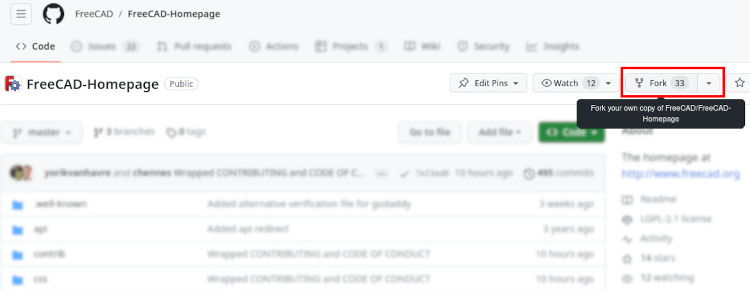
2) If you don’t have an account or prefer to inspect and modify files locally without relying on GitHub’s features, download the compressed folder and unzip it :
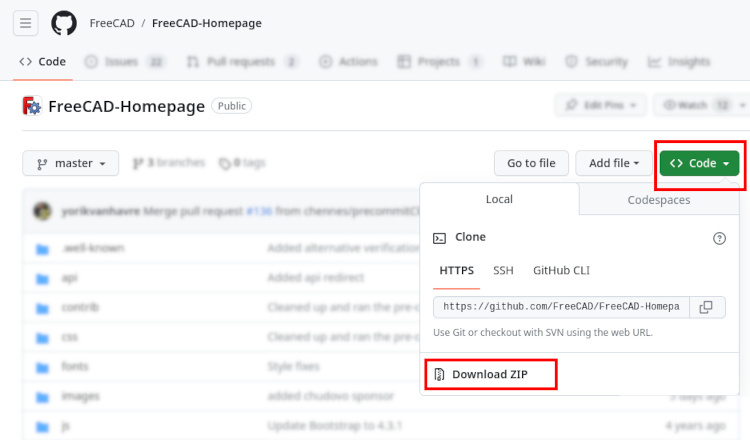
3) From GitHub Desktop app, clone the fork you just created (skip this step if you downloaded the zip in step 2) :
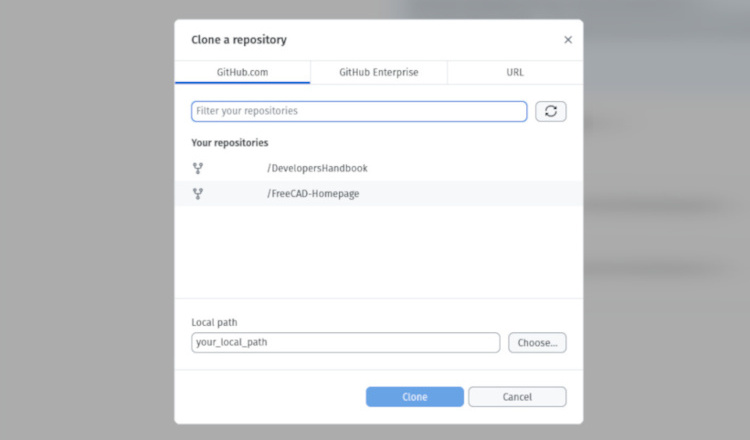
4) Make sure PHP is installed on your system (on GNU/Linux in 2023, install the PHP8 CLI package).
5) Go to your local cloned copy of the repository, in the folder you specified previously (“FreeCAD-Homepage” in this case), and open the terminal at working-directory location :
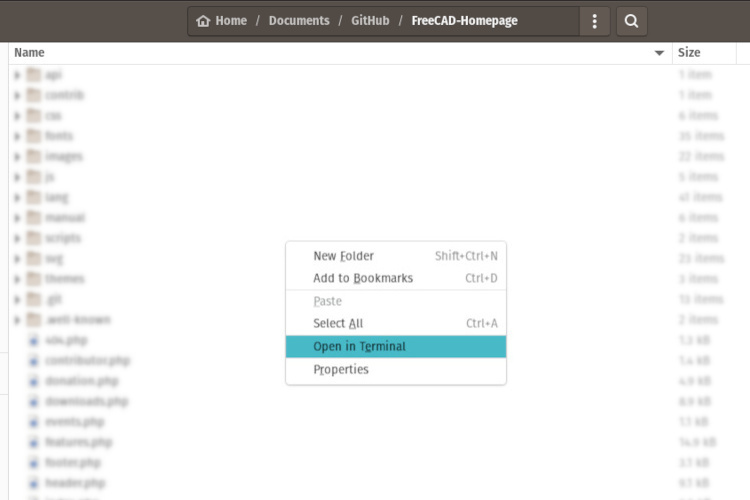
6) Paste php -S 127.0.0.1:8000 (or php -S localhost:8000) to start the PHP server locally:

7) Open a new tab in your web browser with 127.0.0.1:8000 (or localhost:8000) to display the “index.php” file of the web page correctly.
If you want to reach a particular file, use localhost:8000/MyFile.php.
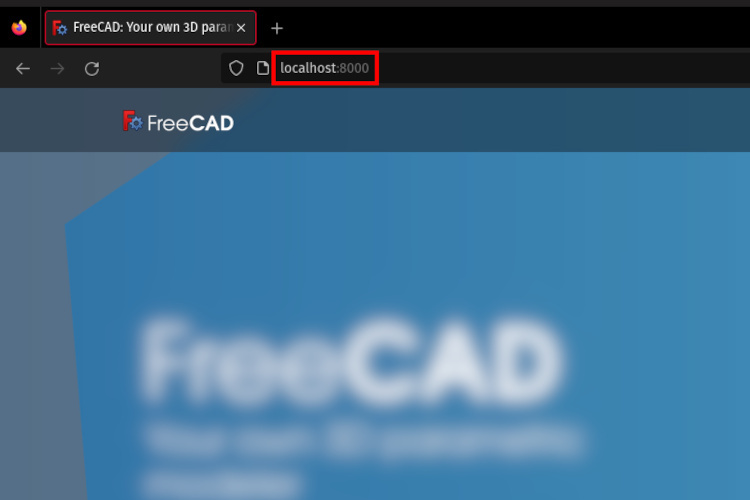
N.B: the translation of the web pages does not work.
Managing translations #
In order for the language and translation management system to work, each text that potentially needs to be translated must be encapsulated as follows:
<?php echo _('Text_to_be_translated'); ?>
The site administrators regularly run a script that updates the translatable strings on the Crowdin platform. The added texts can then be translated by contributors. The newly translated content is then forwarded back to the website.